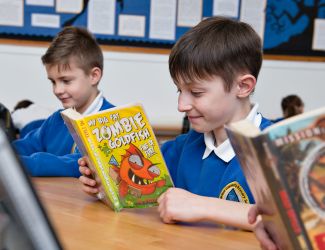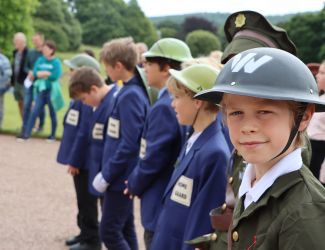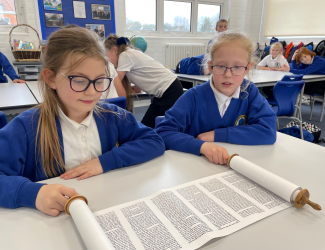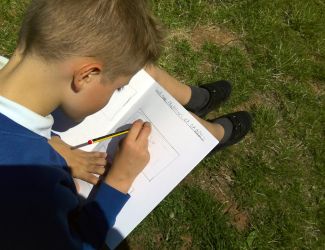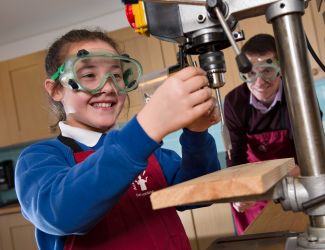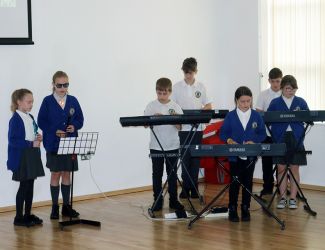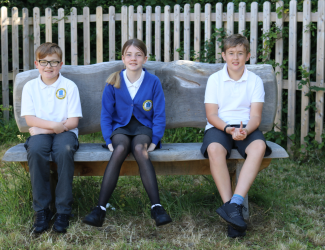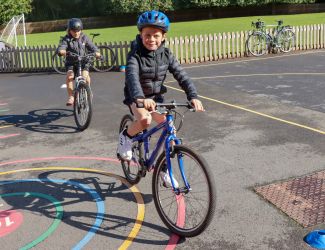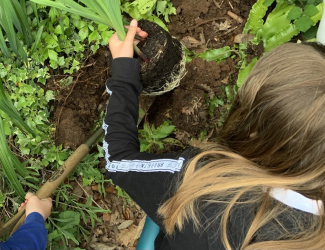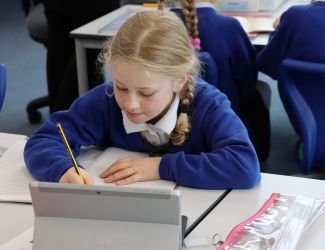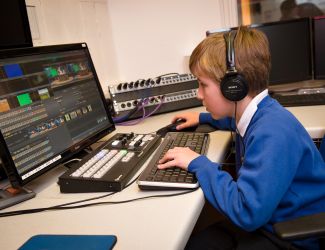Year 4 Music Curriculum
Children will be taught six key strands of musical knowledge which include: singing, listening, improvising, composing, performing and reading notation. Pupils will be encouraged to explore the musical concepts through learning to play as part of a whole class ensemble of violins or brass. They will be taught…
Singing
- Continue to sing a broad range of unison songs with the range of an octave pitching the voice accurately and following directions for getting louder (crescendo) and quieter (decrescendo).
- Sing rounds and partner songs in different time signatures and begin to sing repertoire with small and large leaps as well as a simple second part to introduce vocal harmony.
- Perform a range of songs in school assemblies.
Listening
The following styles of music will be introduced as well as recapping on styles that have been taught in previous years.
Western Classical Tradition and Film:
- Classical- Beethoven
- Early- Hildegard
- 20th Century- Rutter
Popular Music:
- Jazz- Billy Strayhorn/ Duke Ellington Orchestra
- 90s Indie- Oasis
Musical Traditions:
- Punjab/UK- Bhangra- Bhujhangy Group
- Trinida- Calypso- Trinidad Steel Band
Improvise
- Improvise on a limited range of pitches on the instrument they are now learning, making use of musical features including smooth (legato) and detached (staccato).
- Begin to make compositional decisions about the overall structure of improvisations. Continue this process in the composition objectives below.
Compose
- Combine known rhythmic notation with letter names to create short pentatonic phrases using a limited range of 5 pitches. Sing and play these phrases as self-standing compositions.
- Arrange individual notation cards of known note values (i.e. minim, crotchet, crotchet rest and paired quavers) to create sequences of 2-, 3- or 4-beat phrases, arranged into bars.
- Compose music to create a specific mood, for example creating music to accompany a short film clip.
- Introduce major and minor chords.
- Include instruments played in whole-class/group/individual teaching to expand the scope and range of the sound palette available for composition work.
- Capture and record creative ideas using any of: graphic symbols, rhythm notation and time signatures, staff notation and technology.
Performing
- Develop facility in the basic skills of Violin/Brass over two terms..
- Play and perform melodies following staff notation using a small range
- Perform in two or more parts (e.g. melody and accompaniment or a duet) from simple notation using instruments played in whole class teaching. Identify static and moving parts.
- Copy short melodic phrases including those using the pentatonic scale (e.g. C, D, E, G, A).
Reading Notation
- Introduce and understand the differences between minims, crotchets, paired quavers and rests.
- Read and perform pitch notation within a defined range.
- Follow and perform simple rhythmic scores to a steady beat: maintain individual parts accurately within the rhythmic texture, achieving a sense of ensemble.

